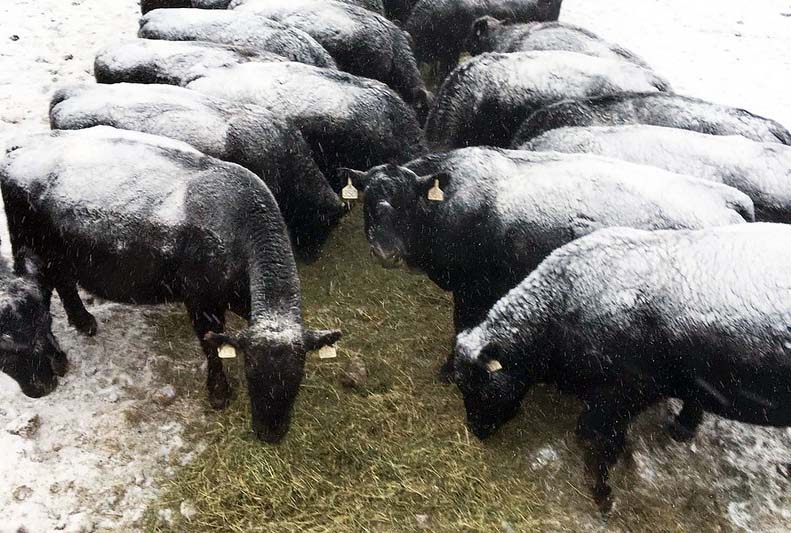
Unrolling the hay on the ground and changing the location is a way to reduce the amount of damage to the pasture from cattle during feeding. | Download this photo.
Cattle Chat: Facility maintenance and mud management
K-State beef cattle experts offer management advice on animal handling through facilities and in mud
Feb. 1, 2022
By Grace Jacobsen, K-State Research and Extension news writer
MANHATTAN, Kan. — When riding a rollercoaster, sometimes the moment of greatest anxiety is at the top of the ride before the passenger plummets to the bottom.
Like people, cattle can also experience stress when being processed in a facility that is not set up well for their natural movement, said Kansas State University beef cattle experts on a recent Beef Cattle Institute Cattle Chat podcast.
Facilities management
Proper handling and facilities are as important as a well-balanced diet for cattle said the experts. Optimal facilities lead to efficient weight gain and greater herd health.
“We have to understand how to use the types of facilities that we have,” said veterinarian Brad White.
Before processing in the spring, the experts said that winter is a good time to assess the cattle handling facilities and make any necessary adjustments.
“It is important to have the gates set up where cattle can move easily,” said Phillip Lancaster, BCI nutritionist. He added that requiring the cattle to make a lot of right-angled turns will slow them down moving through the handling facilities.
“The best facilities allow for cattle to move naturally,” Lancaster said.
Veterinarian Brian Lubbers added: “The No. 1 mistake that I have seen is people overcrowding or overfilling a tub system because they think it’s more efficient. They’re getting more in, but the cattle don’t move as efficiently.”
The safety of both people and cattle is a key concern. Lubbers said having people properly trained with the right attitude is an important factor in maintaining safety for all.
Muddy matters
Along with cattle handling facilities, mud can also have an impact on the stress of the cattle in the winter and early spring, according to K-State’s experts.
White said with temperatures swinging from 5 below to 55 degrees Fahrenheit, mud can quickly accumulate throughout lots.
“Mud may contribute to some health issues, but the main thing we see is a decrease in the efficiency of nutrient use by cattle,” White said.
Mud is primarily created where cattle spend most of their time – feeding and water areas. Areas with deep topsoil can also expect mud to accumulate faster than areas with shallow topsoil, according to Lancaster.
“One of the ways we help control mud is to move things around,” Lubbers said. “Whether it’s hay or cubes or whatever, moving feeding areas around helps at least mitigate it a little bit.”
Lancaster added: “Another way to reduce mud is to unroll hay on the ground where the cattle are able to spread out to eat. But unrolling excess hay on the ground can increase hay wastage.”
To hear the full discussion, listen to the Cattle Chat podcast online.

